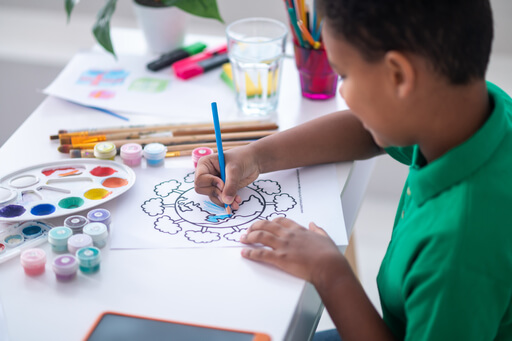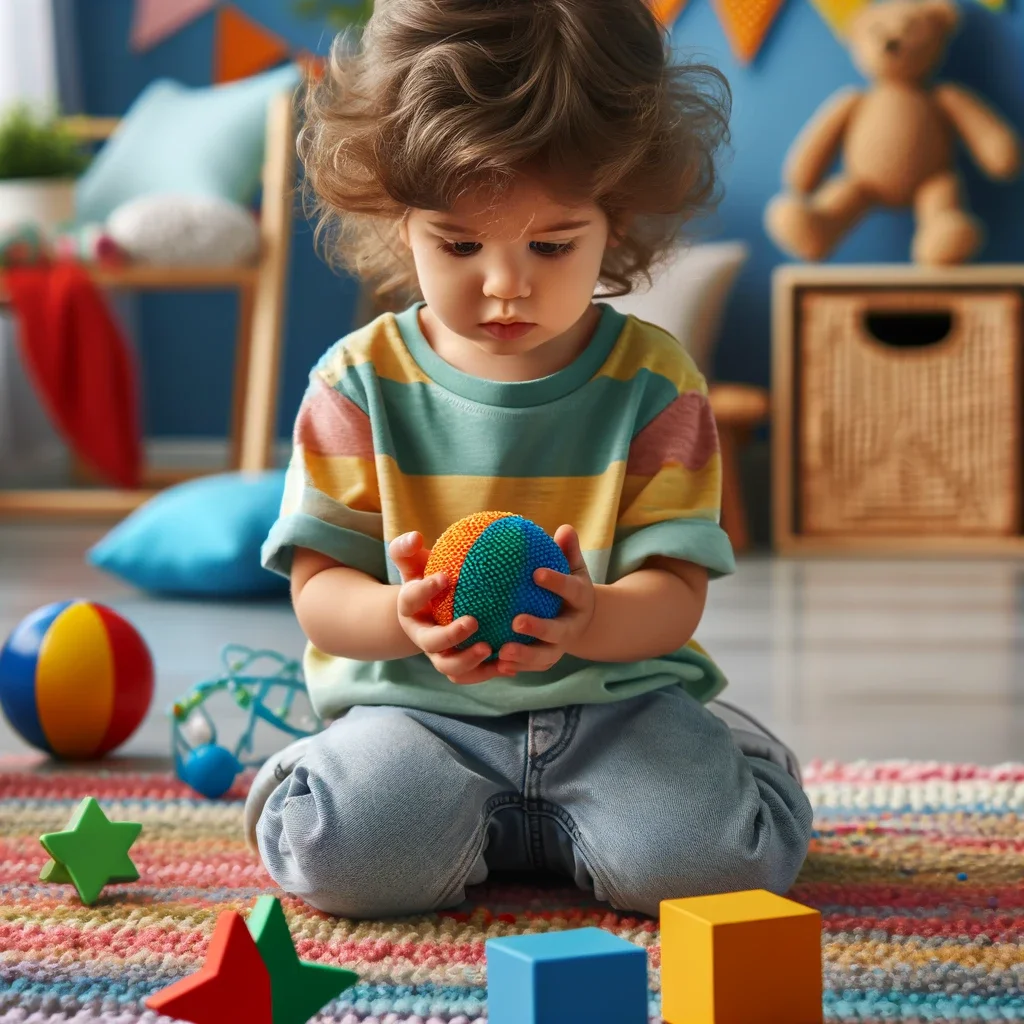Unlock Motor & Sensory Skills: Key to Child Development
By Prapoorna M
Last Updated: December 15, 2023
In the intricate tapestry of a child’s development, motor and sensory skills play a pivotal role. Pediatric occupational therapy focuses on nurturing these abilities and recognizing their significance in achieving developmental milestones. From object manipulation to facial expression and following perception, each skill contributes to a child’s physical, cognitive, and social growth. This comprehensive article explores the diverse facets of motor and sensory skills, shedding light on their importance in pediatric occupational therapy and the broader context of developmental milestones.
Object Manipulation: Mastering the Art of Skilful Handling

Object manipulation is a cornerstone of motor development in children. It involves the adept handling of various objects, encompassing activities such as grasping, moving, and effectively using items. This skill lays the foundation for tasks ranging from basic play to more intricate activities, influencing a child’s overall dexterity and coordination.
Eye-Hand Coordination: Bridging Vision and Action

The coordinated control of eye movement with hand movement is a fundamental skill known as eye-hand coordination. This ability enables children to perform tasks that require synchronization between their visual and motor systems. From catching a ball to the precision required in writing, eye-hand coordination is integral to mastering a myriad of activities.
Coordination (Midline Crossing): Crossing Boundaries for Balanced Development

The ability to move limbs across the middle of the body, known as midline crossing, is a crucial aspect of coordination. This skill is significant for activities that demand the use of both sides of the body simultaneously. Whether it’s reaching across to grab an object or engaging in bilateral movements, midline crossing contributes to balanced motor development.
Bilateral Hand Coordination: A Symphony of Cooperation

The harmonious use of both hands in a coordinated way is termed bilateral hand coordination. This skill is vital for tasks that necessitate the simultaneous involvement of both hands, such as tying shoelaces or cutting with scissors. Bilateral hand coordination lays the groundwork for mastering complex activities that require a synergy of movements.
Separation of Sides of Hand & Finger Dissociation: Precision in Movement

The ability to move fingers independently of each other and use different parts of the hand for distinct functions is referred to as hand and finger dissociation. This skill enables precise manipulation, allowing a child to stabilize with one part of the hand while manipulating with another. It is fundamental for activities that demand fine motor control.
Radial-Ulnar Dissociation: Precision in Forearm and Wrist Movements
Radial-ulnar dissociation involves the independent movement of the radial (thumb side) and ulnar (pinky side) aspects of the forearm and wrist. This skill is crucial for turning the hand appropriately to manipulate objects, showcasing the importance of precise forearm and wrist movements in various tasks.
Palmar Arching: Flexing for Effective Grip

The flexing of the palm, known as palmar arching, contributes to a child’s ability to hold and manipulate objects effectively. This skill allows for a more secure grip on objects of different sizes, influencing the development of fine motor control and enhancing a child’s interaction with their environment.
Facial Expression & Following Perception: The Social and Perceptual Dimensions
In the realm of sensory skills, the ability to read and interpret facial expressions holds a significant place. This skill is an integral part of social communication, enabling children to navigate social interactions effectively. Additionally, the capacity to follow along with perceptual tasks or instructions enhances a child’s cognitive abilities, contributing to overall perceptual development.
Pediatric Occupational Therapy: Nurturing Holistic Development
Pediatric occupational therapy serves as a guiding force in cultivating motor and sensory skills. Therapists work collaboratively with children, parents, and educators to address specific developmental needs. Through targeted interventions and activities, occupational therapy aims to enhance a child’s ability to engage in everyday tasks and achieve developmental milestones.
Conclusion
Motor and sensory skills form the bedrock of a child’s developmental journey, influencing their physical, cognitive, and social well-being. From the intricate dance of hand and finger movements to the subtleties of facial expression interpretation, each skill contributes to the multifaceted tapestry of growth. In pediatric occupational therapy, understanding and nurturing these skills are paramount. As we delve into the intricacies of developmental milestones, let us recognize the profound impact of motor and sensory skills in shaping the capabilities and potential of the next generation.
Frequently Asked Questions
1. What are motor and sensory skills?
Motor skills involve movement and coordination, while sensory skills relate to how our body perceives and interprets information from the environment through our senses. Both play crucial roles in a child’s development.
2. Why are motor and sensory skills important for children?
These skills are fundamental for everyday activities like playing, self-care, learning, and social interaction. They also contribute to academic success, emotional well-being, and overall independence.
3. What are some examples of motor skills?
Object manipulation, grasping, eye-hand coordination, midline crossing, bilateral hand coordination, hand and finger dissociation, and palmar arching are all important motor skills.
4. What are some examples of sensory skills?
Facial expression interpretation, following perception, touch, proprioception (body awareness), hearing, vision, and taste are all key sensory skills.
5. What is the role of pediatric occupational therapy in developing these skills?
Occupational therapists assess and address children’s motor and sensory needs through targeted interventions and activities. They work with children, parents, and educators to ensure children can participate in everyday activities and reach their full potential.
6. What are some examples of interventions used in pediatric occupational therapy?
Therapists may use sensory integration techniques, play-based activities, adapted equipment, assistive technology, and motor exercises to help children improve their skills.
7. How do motor and sensory skills impact a child’s social development?
Skills like interpreting facial expressions and engaging in coordinated play contribute to a child’s ability to build and maintain relationships.
8. How can parents support their child’s motor and sensory development?
Parents can provide sensory-rich environments, engage in playful activities, encourage exploration, and follow their children’s lead in activities they enjoy.
9. Who can benefit from pediatric occupational therapy?
Children with developmental delays, neurological conditions, sensory processing disorders, or physical disabilities can benefit from occupational therapy services.
10. How can I learn more about motor and sensory skills and pediatric occupational therapy?
You can consult your child’s pediatrician, occupational therapist, or other healthcare professionals. Online resources from reputable organizations like the Wellness Hub can also be helpful.
About the Author:
Prapoorna Mangalampalli, Psychologist
Prapoorna, an author with dual master’s degrees in Psychology and English, excels in exploring and enhancing human experiences. Her writing, characterized by deep empathy and insight, primarily focuses on the complexities of counseling, spanning areas such as online, marital, relationship, child, family, and career counseling. Specialized training in various counseling sectors underscores her dedication to positive change. In her blogs, Prapoorna offers valuable guidance and a unique perspective for parents of children with Autism and special needs, creating a supportive community in this realm.
Book your Free Consultation Today
Parent/Caregiver Info:
Client’s Details:
* Error Message








